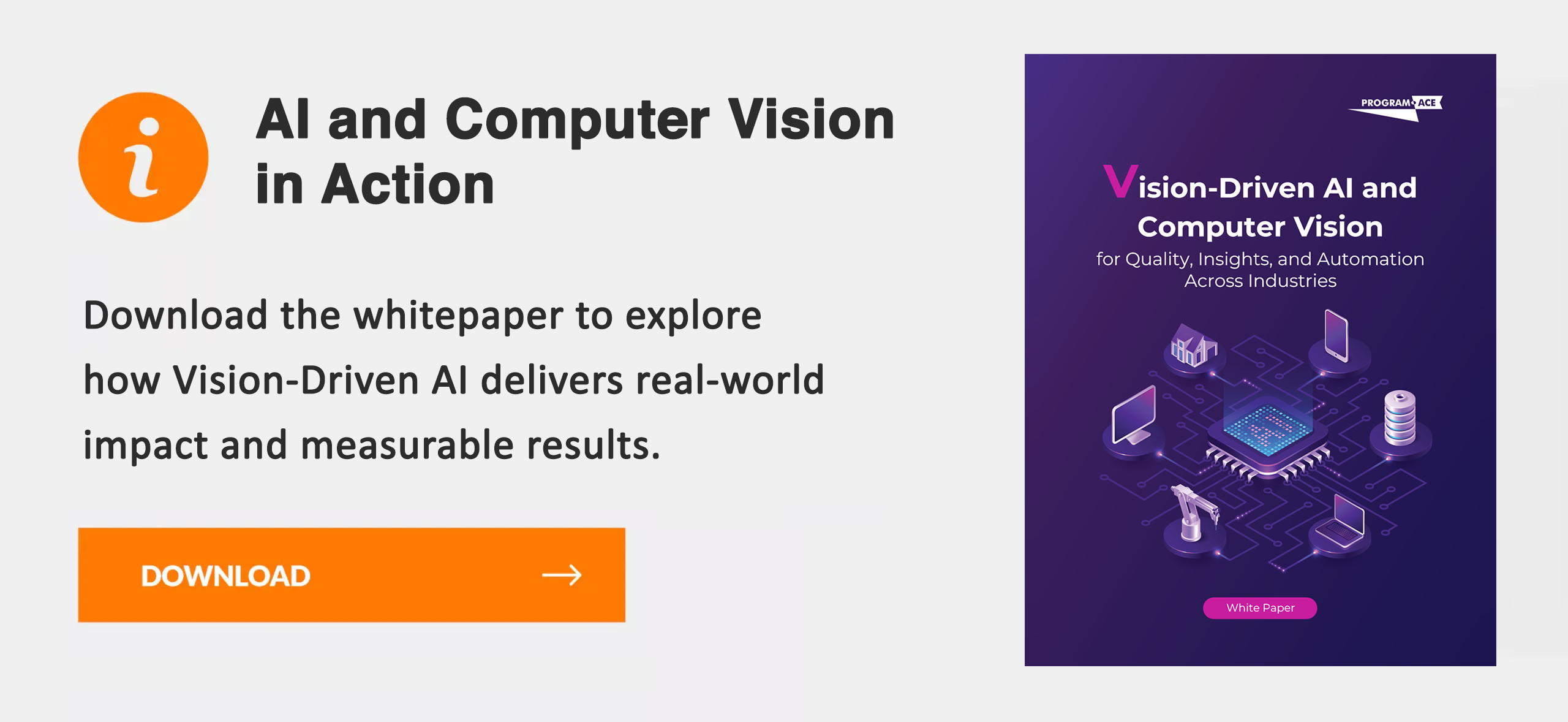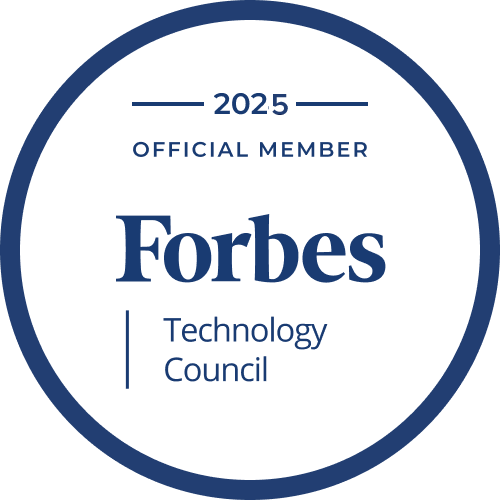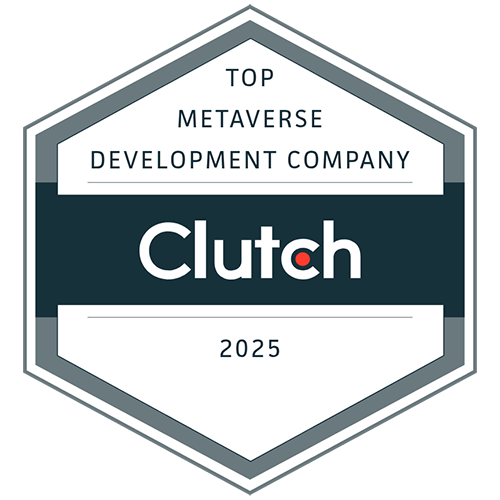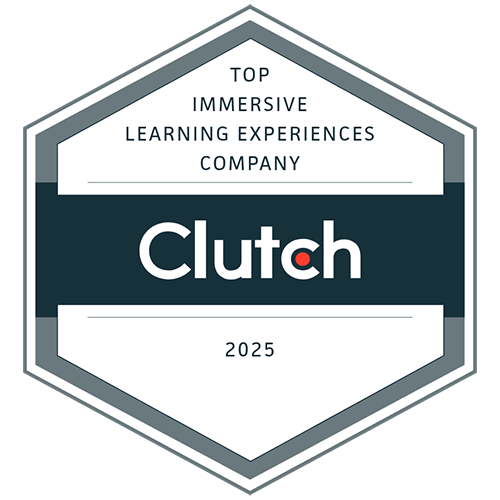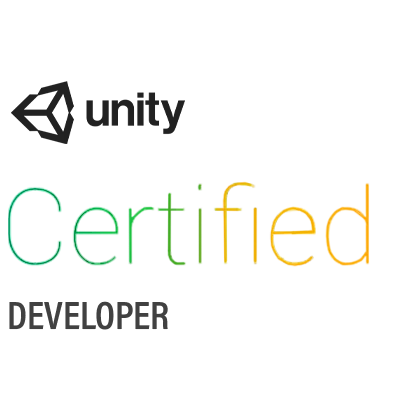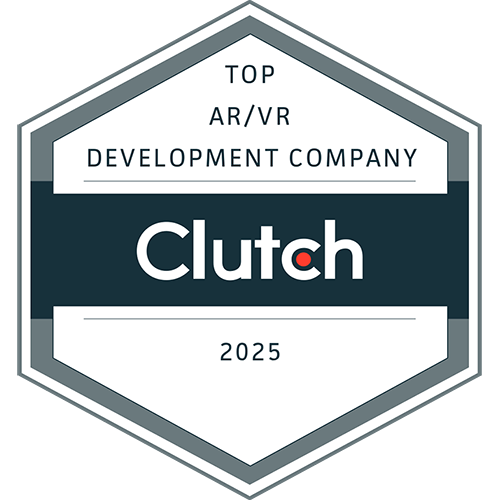Computer vision applications are no longer limited to experiments or isolated use cases. Businesses now rely on them to solve specific, measurable problems. From automated inspections to real-time tracking, computer vision delivers results that cut costs, improve output, and reduce risk. The shift toward visual automation is driven by reliable data processing, improved image recognition models, and better deployment tools.
Many companies start with off-the-shelf tools, but most reach a point where custom features become necessary. That’s where computer vision development services bring value. They help organizations build tailored systems for unique environments, use cases, and operational constraints. The focus moves from testing models to integrating them into production.
Visual systems now support healthcare diagnostics, quality control in manufacturing, smart retail displays, traffic monitoring, and logistics coordination. Every sector has its own version of computer vision applications that serve direct business goals.
Understanding where these tools work best requires looking at how real projects operate and what makes a solution efficient. The following sections outline specific areas where computer vision development services help companies build functional, scalable solutions.
From Lab to Industry: How Computer Vision AI Became a Strategic Tool
Computer vision AI moved from limited lab trials to active deployment once businesses saw real cost and accuracy benefits. Companies no longer test vision models as a future investment — they use them to replace manual inspection, enable real-time tracking, and automate decision-making. AI & computer vision solutions now appear in logistics, healthcare, manufacturing, and public infrastructure. The expansion comes from higher model precision, cheaper hardware, and more stable deployment environments.
Organizations that work with large volumes of visual data adopt computer vision not to experiment, but to meet performance targets. Once models achieve production-grade accuracy, companies focus on integration, not research. Adoption today centers on reliability, speed, and direct ROI, not innovation for its own sake.
The Shift from Experimentation to Operational Value
Many early projects treated vision systems as prototypes with limited deployment goals. Today, those systems are applied across full workflows. AI models now monitor factory lines, guide robots, flag anomalies, and control visual feedback loops in learning environments. Computer vision for learning includes not only academic tools, but also enterprise training systems that analyze eye movement, gestures, and object interaction.
The shifts include:
- Direct use in production. No longer limited to sandbox tests, vision models operate in live environments.
- Focus on business outcomes. Deployment aligns with KPIs like accuracy, throughput, or defect rate.
- Continuous feedback loops. Many systems now improve from live data without full retraining.
The shift occurred because models became good enough to trust. Instead of hoping for insights, teams now design systems around proven, measurable capabilities.
Why AI-Driven Visual Systems Now Outperform Human Accuracy
In quality inspection, facial recognition, and motion tracking, machines beat human observers consistently. AI-driven visual systems can process thousands of frames per second, identify subtle defects, and make objective, repeatable decisions.
Three reasons for superior performance:
- No fatigue. Machines operate at full accuracy regardless of duration or workload.
- Consistent precision. Vision models apply the same logic every time, eliminating bias or inconsistency.
- Higher detail recognition. Well-trained systems detect issues invisible to the human eye.
In environments where failure leads to safety risks or financial loss, replacing human monitoring with computer vision is necessary.
Discover how vision-driven AI and computer vision improve inspection, automation, and training across industries by delivering faster, data-backed decisions. Explore practical frameworks, real use cases, and ROI insights in the full white paper.
Manufacturing Efficiency Through Vision-Based Automation
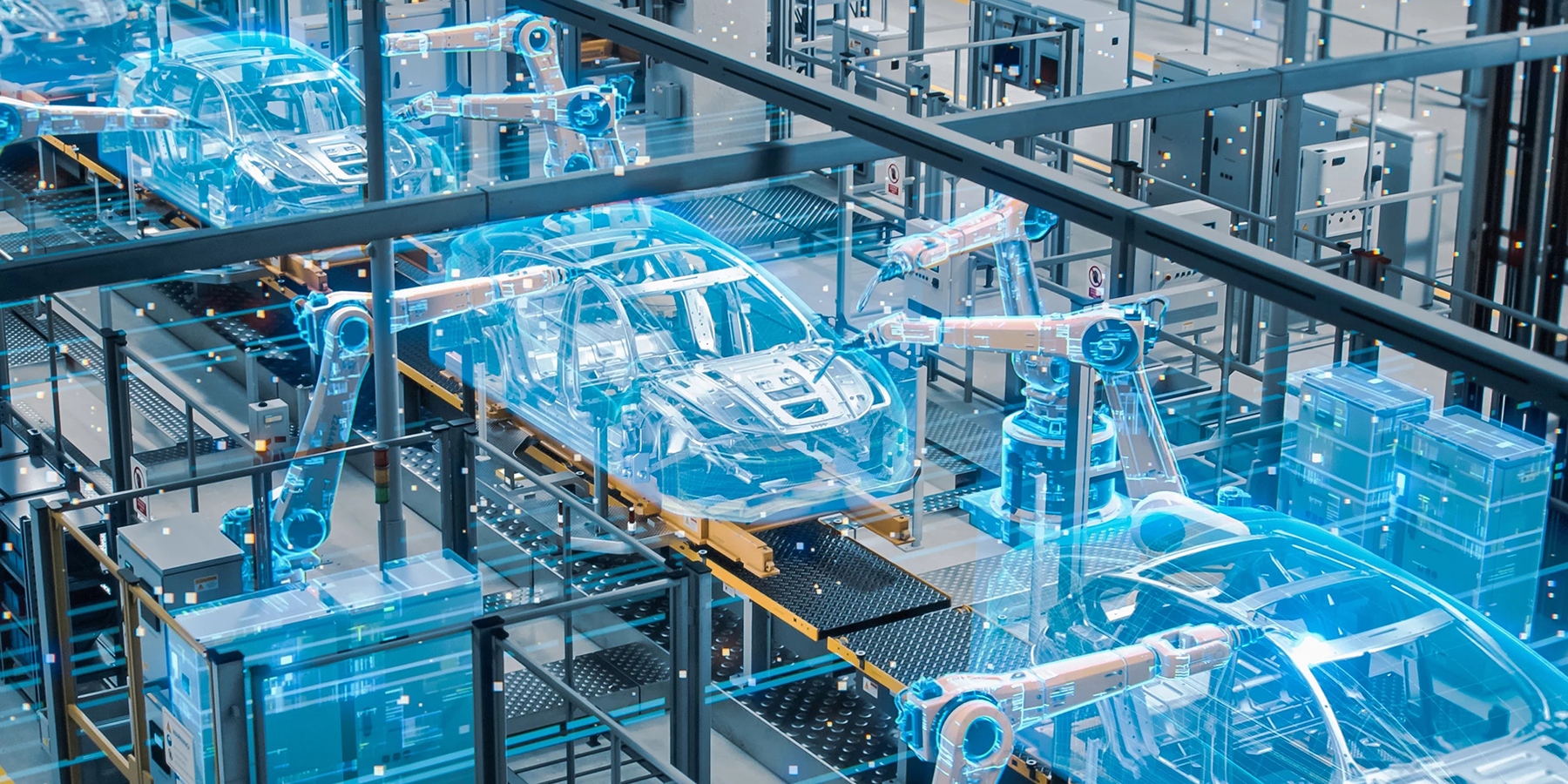
Computer vision plays a central role in optimizing factory operations. Automated visual systems inspect products, track movement on the line, and flag equipment issues before human operators can react. Most manufacturing teams adopt vision tools to reduce costly delays, eliminate repeat errors, and cut manual labor in repetitive tasks.
With high-speed cameras, deep learning models, and edge AI devices, manufacturers now reach throughput and precision levels that were previously out of reach. Efficiency gains stem from better timing, fewer process interruptions, and consistent quality output.
Computer Vision Projects That Reduce Waste and Downtime
Manufacturers often face losses due to defective products, equipment failure, or slow manual checks. Computer vision projects address each of those issues directly by replacing human error-prone steps with fast, accurate visual analysis.
Examples of how companies cut waste and reduce downtime include:
- Surface defect detection. Cameras scan every item and flag anomalies at production speed.
- Conveyor belt monitoring. Vision systems check material flow and spacing to avoid clogs or overlaps.
- Tool wear prediction. By analyzing microscopic changes in machine parts, systems can signal when replacements are needed.
Some companies integrate vision into robotic arms for inline rejection of faulty units. Others use it to monitor the wear rate of consumables. The range of use cases is wide, but the goal remains the same: reduce anything that interrupts output or causes material loss.
Using Computer Vision AI for Predictive Maintenance and Quality Control
Predictive maintenance relies on early signals; not just sound or vibration, but visual indicators such as cracks, discoloration, or alignment issues. Computer vision AI picks up on those signs far earlier than traditional monitoring tools. Once trained, the system can detect failure patterns before they cause downtime.
Quality control also benefits from machine vision systems that classify items in real time. Even minor deviations in size, shape, or surface can be caught and rejected. Unlike random spot checks, full-line inspection ensures consistency from the first unit to the last.
Some manufacturers link vision-based control to automatic line adjustments. When measurements start drifting, the system triggers recalibration without stopping production. Over time, this reduces both defects and human intervention. Visual monitoring becomes a silent but continuous decision-maker in the background of every production cycle.
Contact us to find the computer vision solution that benefits your business.
Retail Environments Optimized by Computer Vision AI
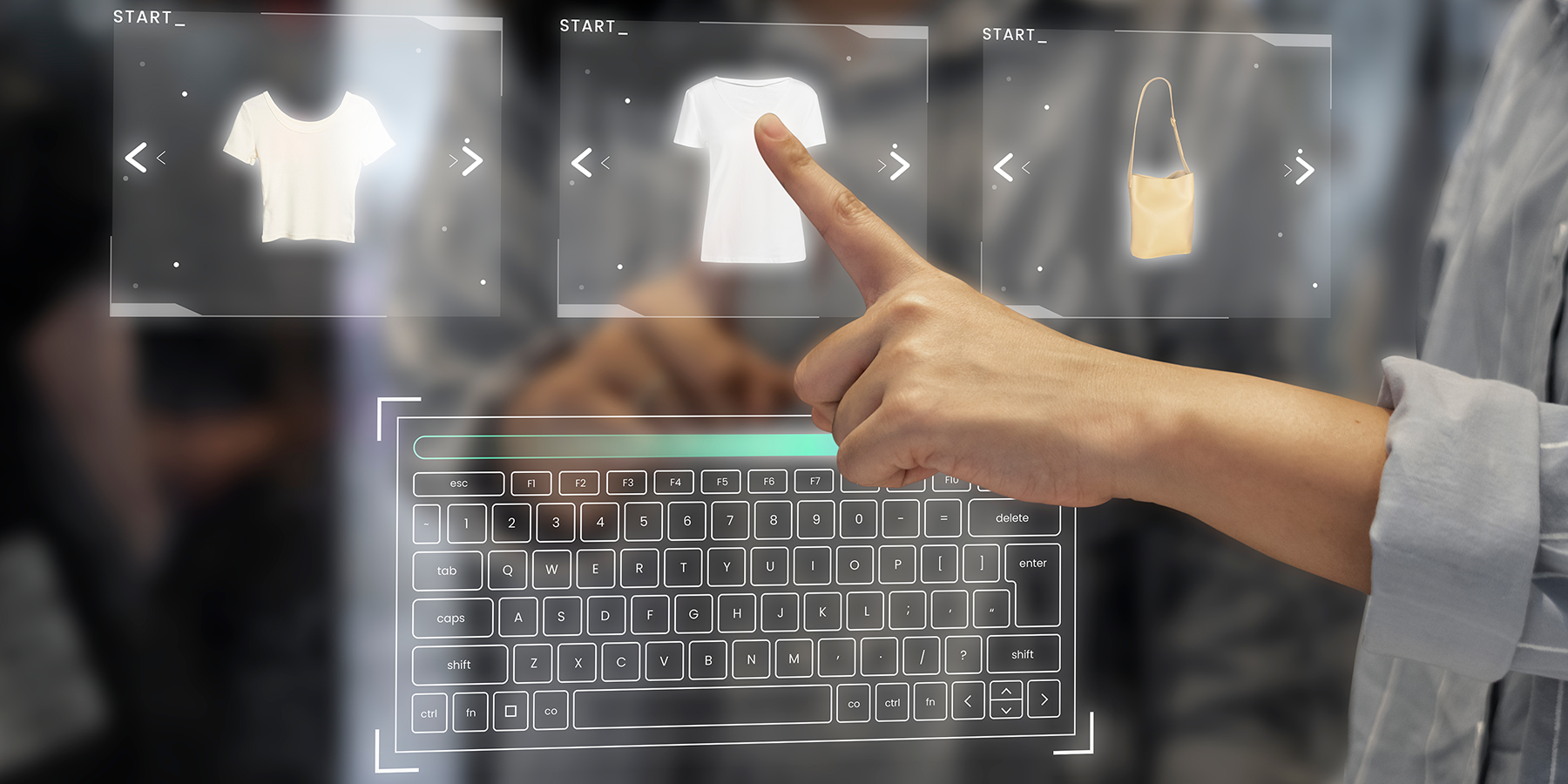
Retailers now apply computer vision AI to monitor shelves, analyze customer behavior, and maintain operational accuracy. Smart cameras and edge-based systems help stores react to real-time events without relying on manual checks. Visual tools provide data on shopper flow, shelf engagement, and product availability. Beyond analytics, vision systems support loss prevention, pricing control, and checkout optimization. Whether for a small retail space or a multi-store chain, the same technology scales to match retail operations of any size.
Smart Shelves, Heatmaps, and Shopper Tracking in Action
Retail stores use vision systems to measure behavior that previously went unnoticed. By installing cameras above aisles and integrating them with smart shelf sensors, teams now access reliable in-store data without hiring extra staff.
Main applications include:
- Heatmaps for movement analysis. Track how customers navigate through displays and where they stop most often.
- Dwell time tracking. Measure how long someone engages with a specific product or section.
- Planogram compliance. Detect shelf layout deviations automatically.
- Real-time stock alerts. Vision tools flag empty spots or misplaced items instantly.
Tracking customer behavior helps retailers adjust product placement and shelf layout based on how people actually interact with the environment. Every insight comes from visual evidence, making it actionable without guesswork.
Inventory Accuracy and Theft Reduction Through Visual Systems
Retail inventory systems often suffer from manual entry errors and untracked shrinkage. Computer vision helps close those gaps by linking visual data to backend inventory logs. Cameras placed on shelves, backrooms, and exits provide an uninterrupted view of stock movement.
Rather than scanning barcodes or counting items by hand, visual systems identify items by shape, color, or position. Shelf activity becomes measurable. Staff can be alerted when stock is low or missing, and store managers get reports that highlight patterns over time.
For loss prevention, many retailers rely on vision to detect suspicious actions like item concealment or tampering. Unlike traditional security footage, AI-based video streams analyze behavior in real time and issue alerts automatically. The result is fewer blind spots, better product tracking, and faster incident response.
Computer Vision Solutions in Healthcare Are Saving Lives
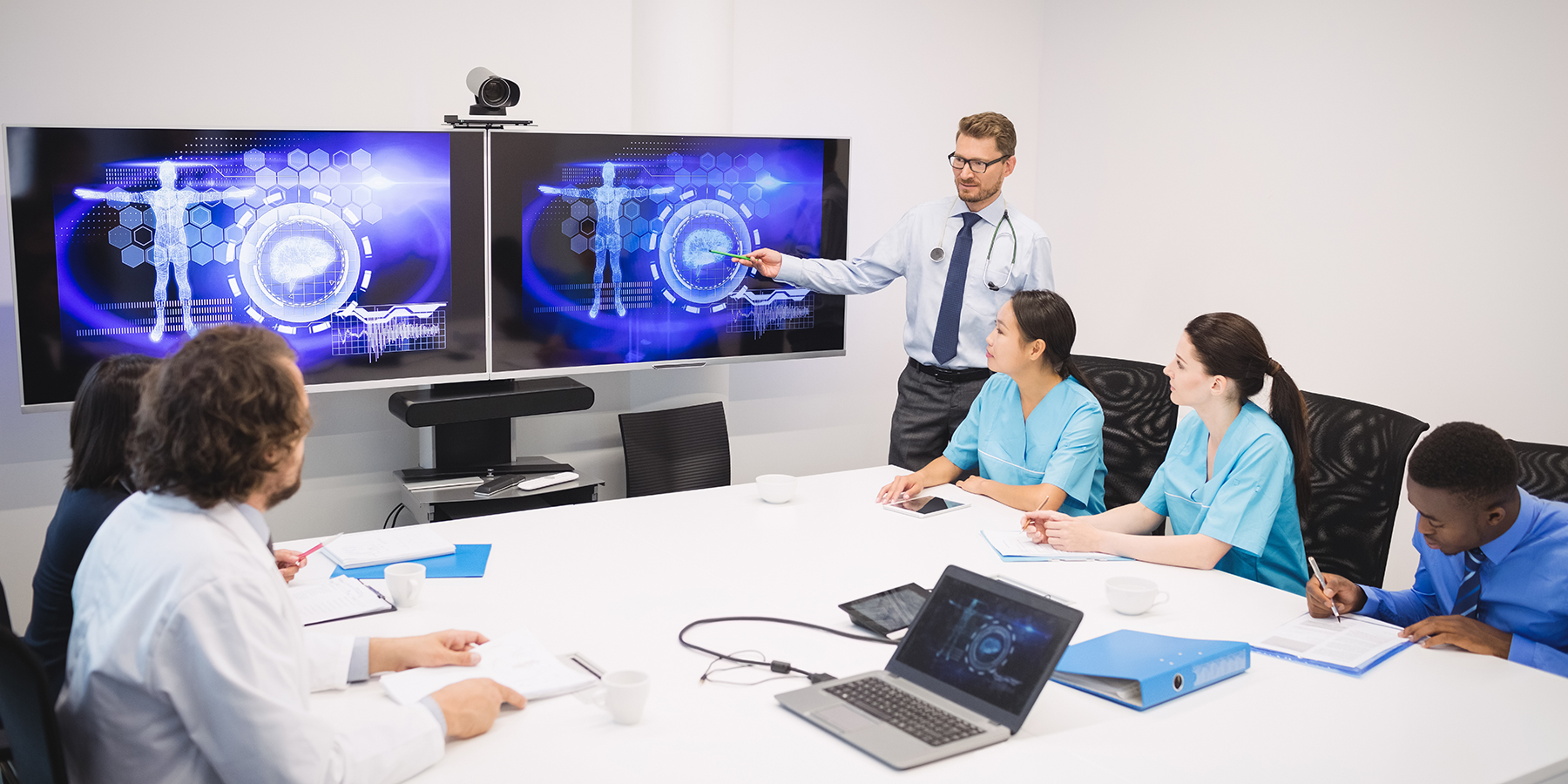
Hospitals and diagnostics labs now use computer vision to support imaging, triage, and patient monitoring. Medical professionals benefit from real-time analysis, which shortens response times and improves diagnostic precision.
Beyond diagnostics, computer vision quality control helps identify anomalies in imaging data that human specialists might miss. Visual models catch inconsistencies, track changes over time, and alert staff to early warning signs. Every system deployed serves a specific, measurable clinical purpose.
Diagnostic Imaging Enhanced by Deep Learning for Computer Vision
Radiologists rely on accuracy when reviewing CT, MRI, and X-ray scans. Deep learning for computer vision enables the detection of tumors, fractures, or inflammation in seconds, even in early stages that are difficult to catch with the human eye alone.
AI models trained on large datasets now assist with:
- Lesion detection. Identify cancerous tissue with high sensitivity.
- Organ segmentation. Outline structures for surgery or treatment planning.
- Image classification. Sort thousands of scans automatically by category or urgency.
Hospitals use these systems not as replacements, but as second opinions that reduce oversight errors. In time-sensitive cases like stroke or trauma, computer vision speeds up decisions and improves outcomes. Diagnostic confidence increases when image interpretation combines human judgment with AI-driven validation.
Surgical Assistance, Patient Monitoring, and Visual Triage
Computer vision tools extend beyond imaging into active patient care. In surgery, cameras powered by AI help guide incisions, detect tissue boundaries, and support real-time feedback for robotic systems. Surgeons receive visual overlays that improve control and reduce procedural risk.
Patient monitoring systems use vision to track posture, movement, and responsiveness, especially in ICUs or elder care. When a patient shows unusual motion patterns, visual models can flag alerts before staff notice.
In emergency rooms, visual triage tools estimate severity by reading facial expressions, posture, or visible injuries. While staff prepare complete assessments, the system provides a fast, visual overview to prioritize treatment. Clinical workflows move faster, not because people work harder, but because computer vision identifies what needs attention first.
Computer Vision Applications in Agriculture and Food Tech
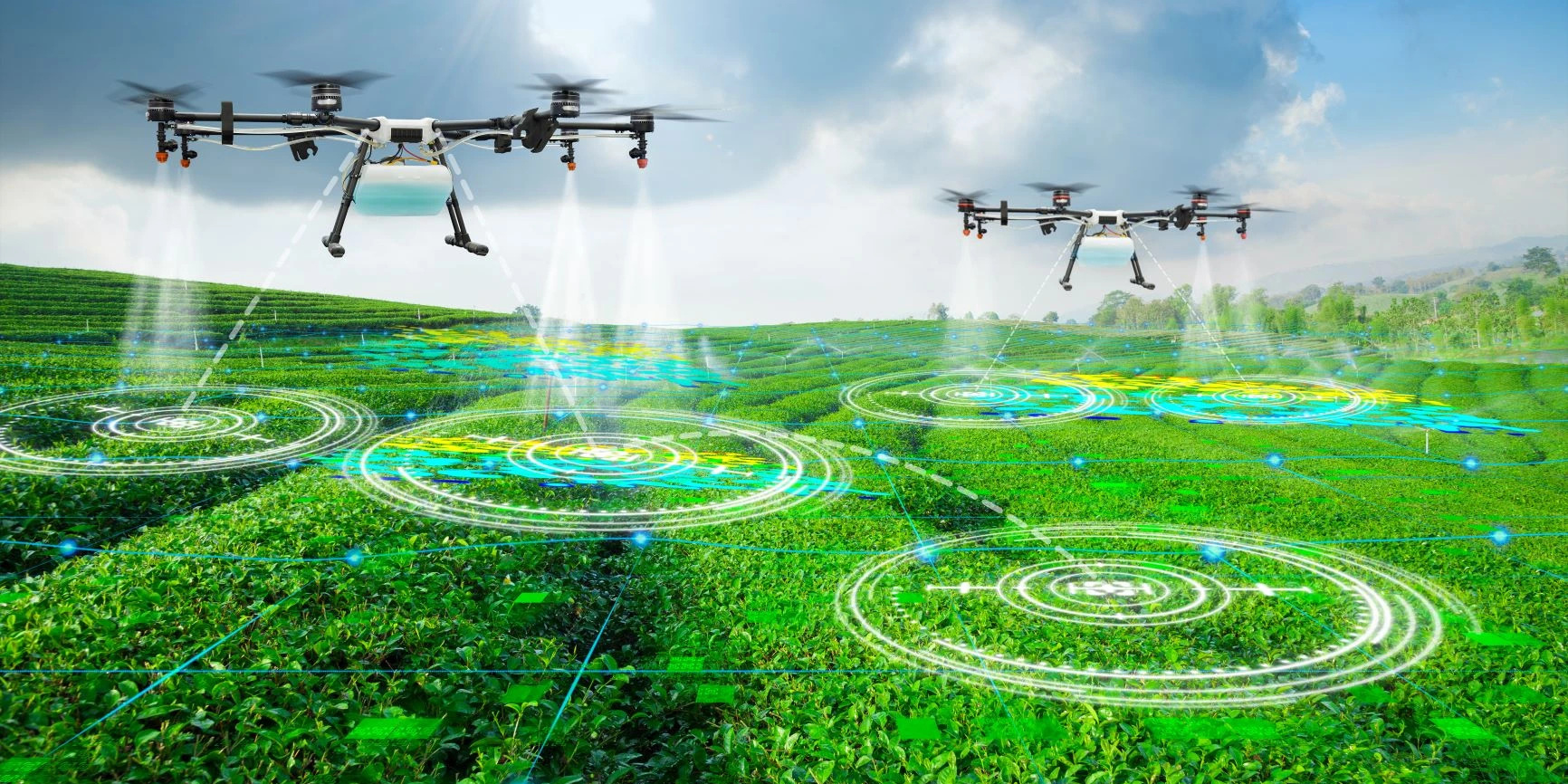
Agriculture and food processing benefit from computer vision tools that work in open fields, greenhouses, and industrial facilities. Automated cameras analyze plant conditions, guide machinery, and evaluate food products without human supervision. Across the supply chain, visual systems replace manual checks with faster, more consistent processes. Farmers, processors, and distributors utilize the same core technology, tailored to their specific environments, to enhance reliability and productivity.
Automated Yield Estimation and Crop Health Analysis
Growers now use drones and fixed cameras equipped with visual models to evaluate plant health and predict yield. By scanning crops at scale, these systems detect patterns invisible to the eye, such as color shifts, shape irregularities, or canopy density changes.
Typical use cases are:
- Early disease detection. Leaf spotting, fungus, or nutrient deficiency gets flagged before it spreads.
- Growth tracking. Systems compare real-time images with expected development timelines.
- Yield forecasting. Visual data feeds into analytics tools that project harvest volume and timing.
The tools described above help reduce chemical use, target irrigation, and avoid late-stage surprises. Farmers can act sooner and plan harvests more accurately, even across large or remote areas, using only the images collected by drones or field-mounted systems.
Visual Sorting, Grading, and Packaging in Processing Lines
Food processing requires speed, consistency, and compliance. Computer vision now handles much of the inspection that human workers once did. Cameras installed along sorting lines scan each item, such as fruits, vegetables, baked goods, or meat, and classify it by size, color, shape, or defect.
Grading systems then separate products into categories or flag them for removal. Unlike random manual checks, visual systems inspect every single item at full processing speed. In packaging, computer vision tracks labeling, counts units, and checks seal integrity. Processors reduce rework and avoid mislabeled or damaged goods reaching the customer. Visual monitoring also supports traceability, with every scan tied to time and batch data.
Smart Cities and Surveillance — Real-Time Vision at Scale
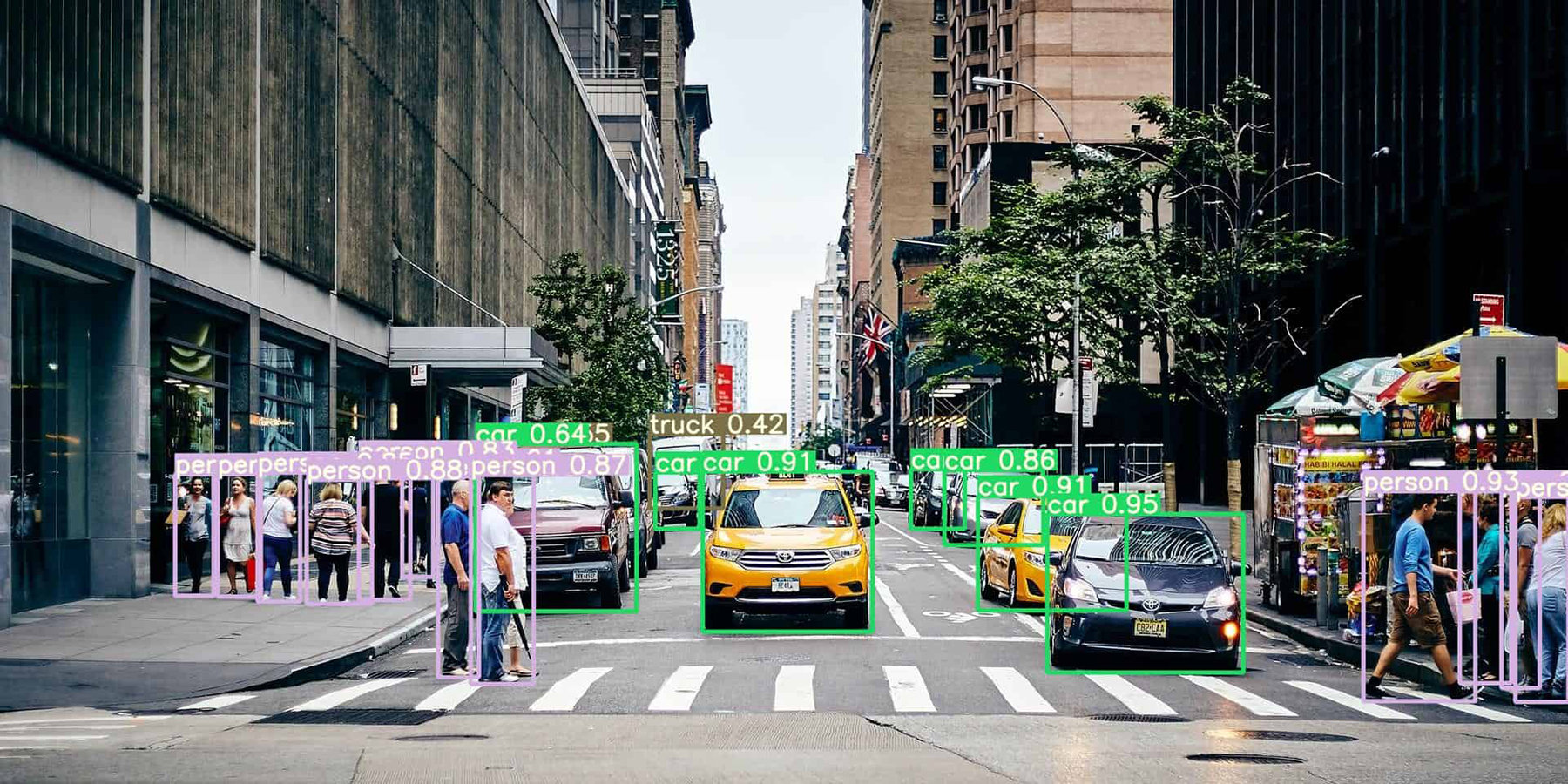
Urban areas use computer vision to manage congestion, monitor public spaces, and detect risks in real time. Cameras connected to AI systems process live footage to inform city operations without requiring manual review.
From traffic intersections to public plazas, vision-based infrastructure helps automate everything from flow control to incident alerts. Systems are built for scale, handling thousands of streams simultaneously with minimal human oversight.
Traffic Flow Analysis and Anomaly Detection
City transportation departments use vision-based tools to monitor intersections, highways, and public transit zones. Instead of relying on inductive loops or radar sensors, smart cameras collect real-time data on speed, volume, and lane usage.
Common uses include:
- Congestion mapping. Identify buildup patterns and reroute traffic dynamically.
- Incident alerts. Detect collisions, wrong-way drivers, or stalled vehicles.
- Zone entry tracking. Count vehicles in high-priority areas like bus lanes or toll zones.
Anomaly detection adds another layer by flagging unusual activity: sudden stops, erratic movement, or objects left unattended. Unlike older systems that required predefined triggers, modern computer vision detects new patterns without prior rule sets. Cities can adapt faster to changing conditions and reduce delays in emergency response.
Facial Recognition and Situational Awareness Systems
Security teams in airports, train stations, and public buildings use computer vision to verify identity, track movement, and respond to unfolding situations. Facial recognition links live video to watchlists, enabling instant alerts for matches without slowing down foot traffic.
Situational awareness systems combine multiple data points, like movement patterns, crowd density, and entry points, to help staff respond to risks before they escalate.
Typical capabilities may encompass:
- Live identity matching. Alerts for persons of interest in high-traffic zones.
- Crowd behavior tracking. Detect shifts in movement that signal unrest or emergencies.
- Zone breach detection. Flag entry into restricted areas with instant notifications.
In critical infrastructure and high-risk venues, the systems reduce blind spots and extend team capacity.
Transportation and Mobility Powered by Vision
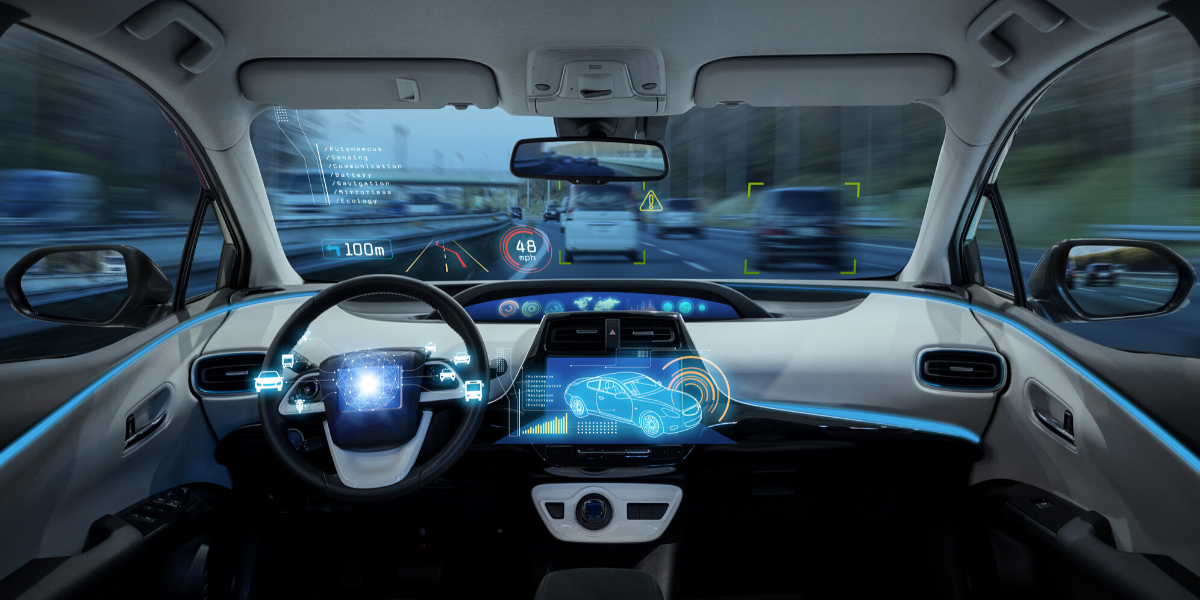
Computer vision supports both personal mobility and commercial transport by enabling real-time awareness, automated control, and environment mapping. Cameras combined with onboard AI guide vehicles, track road conditions, and improve route efficiency.
Across public transport, logistics fleets, and autonomous systems, vision plays a central role in reducing delays, avoiding collisions, and adapting to road behavior. Real-time decisions depend on live visual input, not delayed telemetry or pre-coded responses.
How Deep Learning for Computer Vision Supports Autonomous Driving
Autonomous vehicles require constant feedback about their surroundings. Deep learning for computer vision enables that feedback by processing visual data into immediate driving decisions. Cameras identify lane boundaries, pedestrians, road signs, and vehicles in motion in milliseconds.
Core visual tasks include:
- Object detection. Classify and track other cars, bikes, and pedestrians.
- Lane recognition. Interpret road lines even in poor lighting or weather.
- Sign and signal reading. Understand stop signs, traffic lights, and speed limits.
Models trained on real-world footage continue to improve in complex environments. The accuracy and speed of these systems directly affect passenger safety and public trust in autonomous mobility.
Fleet and Traffic Management with Real-Time Visual Input
Commercial fleets use camera-based systems to monitor vehicles, assess road conditions, and detect driving behavior. Unlike GPS-only tracking, visual input adds a layer of context from stop sign compliance to lane drift or near-collision events.
Traffic managers also use visual feeds to analyze flow across regions, adjusting signals and routes based on actual road use.
The outcomes include:
- Improved route safety. Flag reckless driving and enforce policy.
- Live rerouting. Detect congestion or accidents and change routes accordingly.
- Driver coaching. Use recorded visuals for post-trip training or compliance reviews.
By combining visual data with logistics systems, transportation teams gain better control over both vehicle safety and operational efficiency. Vision-based tools reduce guesswork, shorten response times, and support real-time decision-making.
Exploring Computer Vision Projects in Construction and Heavy Industry
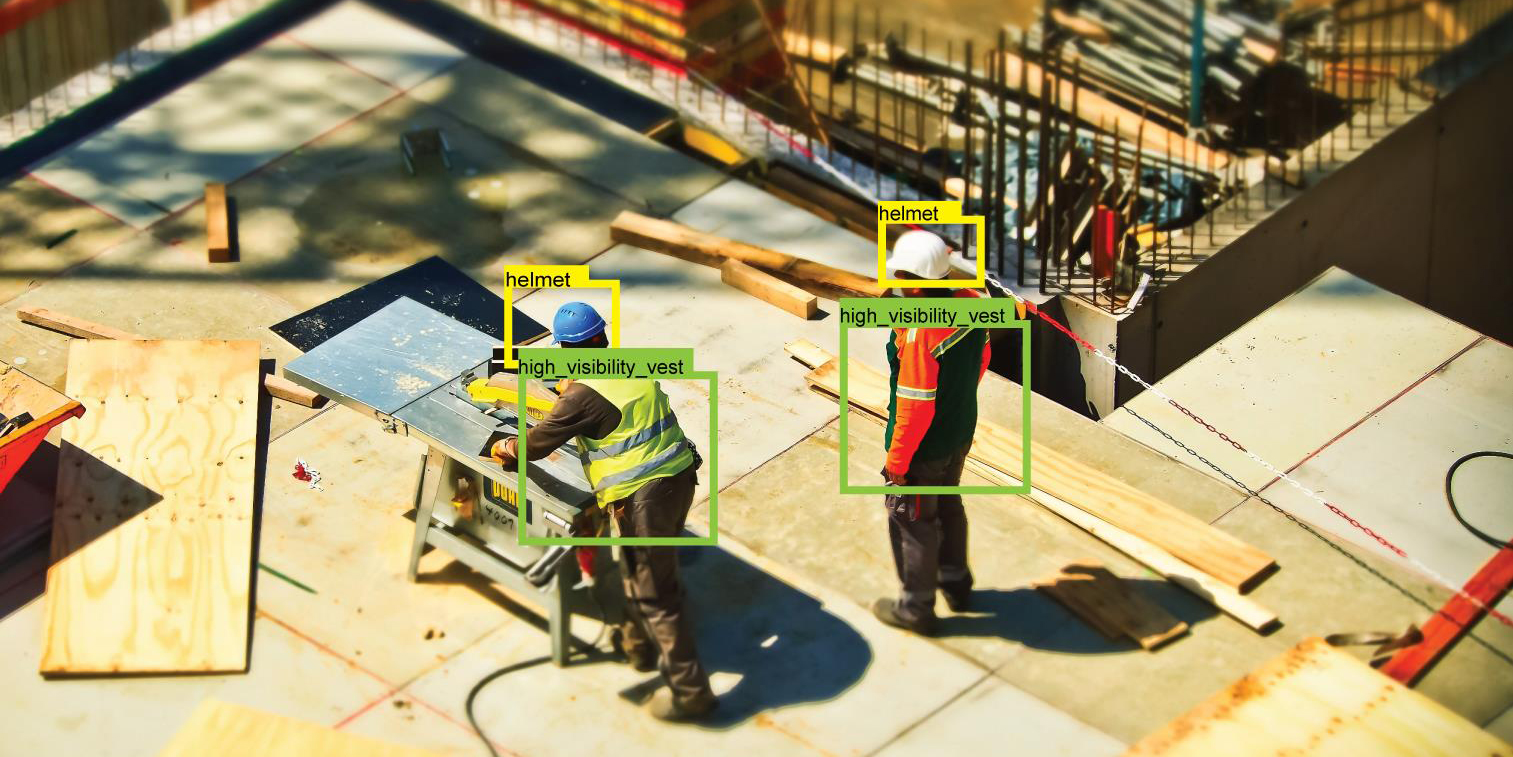
Heavy industry environments demand precision, safety, and continuous oversight. Computer vision meets those demands by replacing manual observation with automated systems that respond instantly to visual input. Construction sites, factories, and energy plants now utilize vision tools to mitigate risk, track material usage, and ensure compliance. Unlike sensors or reports, visual systems directly observe and analyze conditions without delay or bias.
Worker Safety Systems and Compliance Monitoring
Construction and industrial sites introduce constant safety challenges: moving equipment, high platforms, and dynamic conditions. Computer vision helps control risk by identifying safety breaches as they happen.
Instead of relying on checklists or manual reporting, companies now install AI-driven cameras to enforce compliance and reduce liability.
In practice, systems are configured to:
- Detect missing gear. Flag workers without helmets, vests, or harnesses.
- Identify restricted zone access. Alert when personnel enter hazardous or off-limits areas.
- Monitor unsafe behaviors. Track running, climbing without protection, or improper equipment use.
Supervisors receive real-time alerts and can respond before incidents occur. Reports generated from visual logs support training and documentation. Safety becomes continuous, not periodic.
Progress Tracking, Structural Inspections, and Site Automation
Vision-based systems now support project oversight across large-scale builds. Instead of walking the site daily or reviewing manual logs, teams analyze drone footage, time-lapse cameras, and machine vision outputs to evaluate progress and surface delays.
Systems automatically compare current conditions to planned stages. When deviations occur (missed deadlines, incorrect material placement, or incomplete installations), the system flags them visually.
Structural inspections also benefit from visual tools that scan welds, support alignment, or surface integrity. Machines spot cracks, rust, or warping with higher accuracy than human inspectors.
Some firms integrate vision into autonomous machinery. Excavators, cranes, and delivery bots rely on real-time visuals to operate within defined zones and avoid collisions.
Unconventional Computer Vision Applications Worth Watching
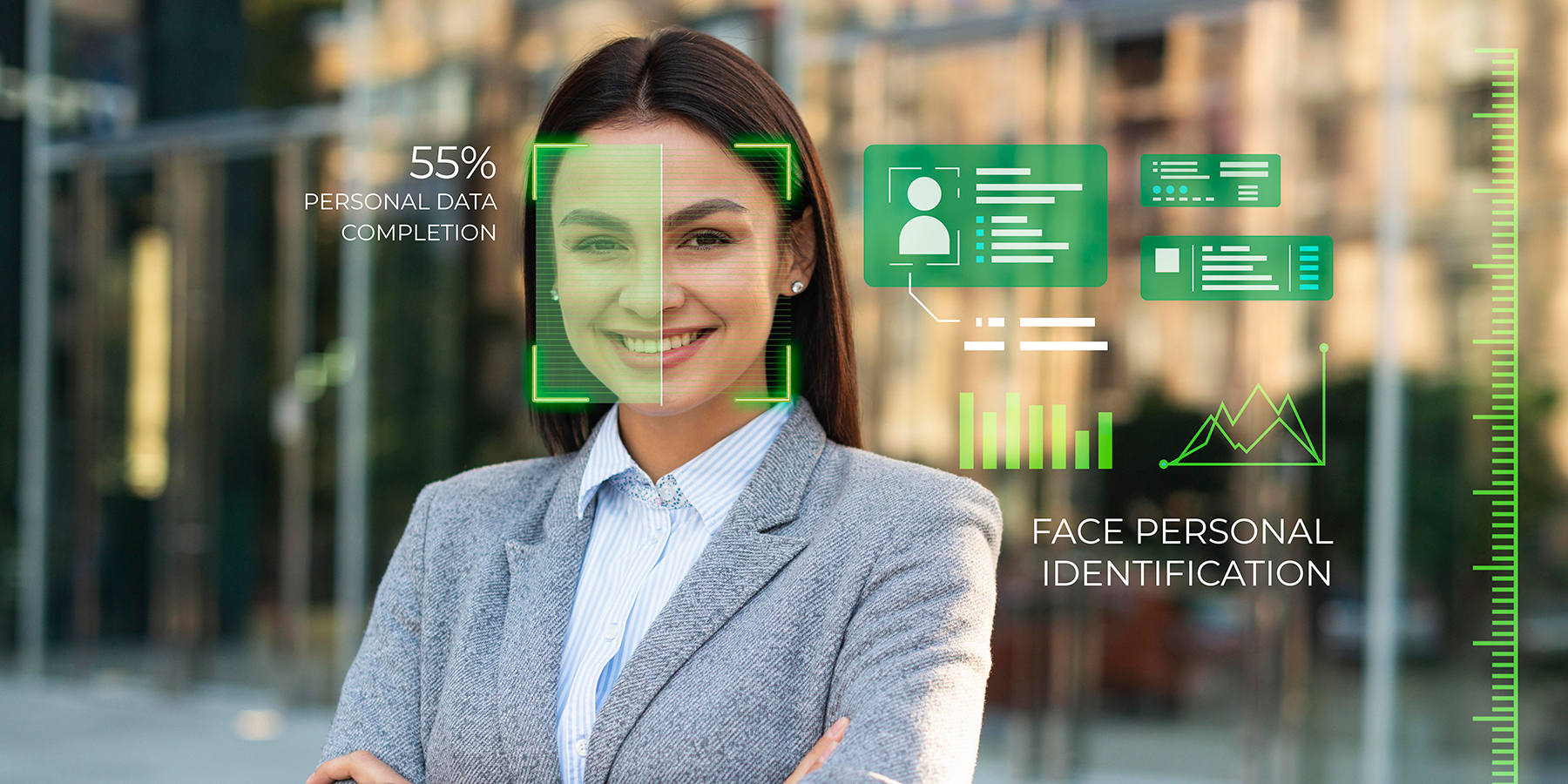
Outside of manufacturing, healthcare, or mobility, computer vision continues to find surprising utility. Industries without traditional ties to automation now adopt vision-based tools to solve accuracy, speed, or verification issues. From legal workflows to entertainment analytics, the technology adapts easily where visual evidence matters. Adoption grows not by trend but because the problems it solves are measurable and recurring.
Insurance, Legal Tech, and Remote Identity Verification
Insurance claims often rely on photos or video as primary documentation. Computer vision automates the review process by scanning images for damage type, severity, and estimated repair cost.
Legal tech firms apply similar models to analyze visual evidence, such as body cam footage, documents, or surveillance for patterns that support or challenge a claim. Instead of reviewing footage manually, lawyers use filtered visual data tagged by AI.
Identity verification is another growing area. Many platforms now verify users through facial comparison, document analysis, or liveness detection, all handled through camera input.
In these contexts, vision tools are used to:
- Authenticate user identity remotely. Match faces to ID documents.
- Assess visual proof. Detect tampering or inconsistencies in submissions.
- Standardize review. Apply the same criteria across thousands of claims or cases.
What once took hours now takes seconds, without compromising precision or legal accuracy.
Vision in Sports Analytics, Livestreaming, and Audience Metrics
In sports, vision systems analyze movement, positioning, and event outcomes in real time. Broadcasters use AI to identify highlight-worthy moments, detect offside positions, and generate performance metrics without manual intervention.
For livestreaming platforms, computer vision helps moderate content, track camera focus, and classify scenes based on visual context. It enables hands-free adjustments and more responsive viewing experiences.
Audience measurement benefits as well. Cameras in venues or retail areas collect engagement data on where people look, how long they watch, and what draws their attention.
Typical results usually include:
- Faster content tagging. Automate highlight reels for post-game coverage.
- Behavior tracking. Measure crowd interest or brand exposure without surveys.
- Camera automation. Focus shifts dynamically based on motion or cues.
Sports and entertainment teams gain both operational efficiency and richer data insights powered entirely through visual input.
What Powers It All — The Role of Deep Learning for Computer Vision
Every functional computer vision system depends on deep learning to interpret images at scale. Models trained on massive datasets process visual frames frame by frame, extracting patterns, shapes, and classifications that match predefined categories.
Accuracy and speed come from well-designed architectures, careful training, and the right balance between generalization and precision. Without deep learning, modern computer vision wouldn't exist in applied environments.
Why Convolutional Neural Networks Still Dominate
Convolutional Neural Networks (CNNs) remain the foundation of most production-grade vision systems. They handle image classification, object detection, segmentation, and tracking tasks efficiently, even under varied conditions.
Reasons CNNs still outperform other methods in applied settings:
- Structured processing. Each convolution layer focuses on localized features like edges, corners, and textures.
- Efficiency on GPUs. CNNs are optimized for parallel computation, enabling fast inference even in real time.
- Proven benchmarks. From ImageNet to COCO, CNNs consistently perform at high accuracy levels across vision challenges.
Variants like ResNet, EfficientNet, or YOLO adapt CNN principles for different objectives, such as accuracy, speed, or model size. Even as transformer-based architectures gain popularity, CNNs remain the default in most edge and embedded deployments because they require less power and training time to deliver usable results.
Data, Labels, and Real-World Model Adaptation
A deep learning model’s usefulness depends on the data it is trained on. Real-world deployment starts with clean, labeled datasets that reflect actual working conditions. Lighting, angle, background clutter, and object variation all affect performance.
Many companies start with public datasets, then fine-tune models using custom data collected within their environment. Labels must be precise and consistent, or training outcomes will fail to generalize.
Steps often involved in adapting models for practical use:
- Curating task-specific datasets. Real footage from machines, users, or installations.
- Labeling with domain experts. Annotations made by those familiar with the process, not generic labelers.
- Validation under live conditions. Test loops on the deployment site to measure accuracy before release.
Raw data holds potential, but labeled data drives results. Without proper adaptation, even a high-performing base model can fail when exposed to the noise and variation of live settings.
Evaluating Computer Vision Solutions for Your Organization
Choosing a computer vision system starts with a clear use case and ends with consistent performance in the field. No single tool fits every situation. The best approach depends on your environment, budget, and operational goals.
Some companies benefit from plug-and-play platforms, while others require systems tailored to unique workflows or physical constraints. Evaluating the right fit means comparing flexibility, integration effort, and long-term maintainability.
Ready-Made vs. Custom-Built Vision Systems
For straightforward use cases with predictable inputs, ready-made tools offer speed and simplicity. Projects requiring environment-specific logic, non-standard inputs, or deeper backend integration benefit more from a custom-built solution.
Let’s compare the two approaches in the table format:
| Criteria | Ready-Made Vision Systems | Custom-Built Vision Systems |
| Deployment speed | Fast; installation and setup often completed in days or weeks. | Slower; requires data collection, development, and testing. |
| Initial cost | Lower; fixed pricing or subscription-based. | Higher; involves custom engineering and model training. |
| Flexibility | Limited; designed for predefined tasks and standard use cases. | High; built for specific workflows, environments, and objects. |
| Accuracy under variation | May struggle with unusual inputs or poor conditions. | Tuned to handle complex or noisy environments reliably. |
| Scalability | Easier to scale quickly; often hits feature limits. | Scales with more control; needs ongoing engineering effort. |
| Integration effort | Minimal; ready APIs and dashboards available. | Moderate to high; requires custom APIs or backend adjustments. |
| Long-term adaptability | Limited customization beyond vendor updates. | Fully adaptable as business needs evolve. |
Common Integration Pitfalls and Deployment Lessons
Many computer vision projects fail not during training, but during deployment. The most accurate model means little if it doesn't operate consistently in production. Hardware mismatches, poor lighting, network delays, or unplanned edge cases often block full-scale use.
Frequent issues comprise:
- Incorrect camera placement. The field of view or resolution is too limited for the task's needs.
- Data mismatch. Training conditions differ too much from live conditions.
- Workflow friction. Vision output isn't connected cleanly to business logic or staff tools.
Deployment also requires ongoing updates. Systems trained once and left alone degrade over time as conditions shift. Successful rollouts involve continuous validation, performance logging, and clear ownership between technical and operational teams. Model accuracy matters, but deployment stability determines long-term value.
Program-Ace Helps You Discover Business-Ready Computer Vision Applications
Program-Ace supports companies at every stage of computer vision adoption, from feasibility assessment to full deployment. As an innovative solutions integrator, we analyze operational goals, identify viable use cases, and tailor the right technology to match them. Our team works across industries where accuracy, speed, and reliability are measurable.
We don't promote one-size-fits-all platforms. Instead, we evaluate what systems are most practical in your environment: edge devices, cloud-based models, or embedded tools. If you're unsure where computer vision fits into your operations or which workflows benefit most, we help you make decisions based on data, not assumptions. We also support long-term scalability through continuous optimization and support.
Contact us to start with a no-obligation consultation. We'll help clarify your technical needs, define a use case, and outline realistic deployment options tailored to your team and infrastructure.
